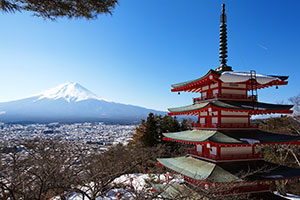DELUXE | PRIVATE-GUIDED: Experience the highlights of Vietnam and Cambodia while staying in luxury accommodations. Journey from Hanoi to Ho Chi Minh City to Phnom Penh to see the major landmarks, including Halong Bay, the imperial capital of Hue, the resort town of Hoi An, and the temples of Angkor Wat.
Hanoi
Hanoi
Hanoi is a city with a history that dates back to the 7th century. In 1954 Hanoi was declared the capital of the Democratic Republic of North Vietnam, and in 1976, following the Vietnam War, it became the capital of the Socialist Republic of Vietnam. This political history has made Hanoi one of the country's most fascinating cities to explore. The most renowned of all the monuments is the Ho Chi Minh Mausoleum. It is dedicated to Vietnam's most well-respected President, who in 1945, led his country to independence. Other highlights include the Museum of History, containing ancient artifacts from Cambodia, Thailand, Japan and China, the 11th century One Pillar Pagoda and legendary Sword Lake.
|
Destination Guide
|
Halong Bay (Hanoi)
Halong Bay (Hanoi)
Meaning “Bay of the Descending Dragon,” Halong Bay’s water is calm and undisturbed despite the jutting limestone mountains that soar out of the water and toward the sky. As if a tail of a Dragon plunged into the earth, the mountains are craggy, sharp, and barren, and are dotted with thousands of small caves of various depths and heights. At dusk, they all take on mysterious shades of gray, mauve and olive, lending credence to the local legends.
|
Destination Guide
|
Hue
Hue
Hue is at the heart of central Vietnam. The landscape – with its misty Perfume River and pagodas – has long been a source of poetry and paintings. Always an important cultural, intellectual and historical city, Hue remains one of Vietnam’s main attractions.
|
Destination Guide
|
Hoi An
Hoi An
Hoi An is an ancient port town that was designated an UNESCO World Heritage site. It is one of the rare places in Vietnam to discover genuine Vietnamese architecture. Walk through the Old Quarter and get a glimpse of a medieval Vietnam that no longer exists in the other areas of the country. Visit the Phuc Kien Pagoda, the 400-year-old Japanese Covered Bridge and the colorful bazaar
|
Destination Guide
|
Ho Chi Minh City (Saigon)
Ho Chi Minh City (Saigon)
Ho Chi Minh City (Saigon) is often referred to as Vietnam’s jewel and the Pearl of the Orient. Located in south Vietnam, Ho Chi Minh City is the country’s largest city, with more than six million people and over one million motorbikes. Under the current regime the city is once more being rebuilt. Whole blocks are disappearing, being replaced by concrete, steel and glass structures. Central Saigon, which is still the official name for the city center, shows evidence of the French colonial city, with wide, tree-lined boulevards, sidewalk cafés and elegant French architecture. The city is divided into two sections: Saigon, the municipal and historical district, and Cholon (Chinatown), where the entrepreneurial talent and private funds are concentrated. Cholon appears to be the most populated and in general the most vigorous part of Ho Chi Minh City. It is well worth a visit for its bustle and activity and its pagodas, which are reputed to be the finest in the whole city.
|
Destination Guide
|
Mekong Delta
Mekong Delta
The Mekong Delta is not only one of southern Vietnams most agriculturally rich regions, but it is also one of the most beautiful. The five rivers that flow into this region keep the land green, fertile, and uniquely scenic. Visitors may visit one of the many fruit orchards that the region if famous for, and shop for unique food and gifts at the local floating markets. The city of Chau Doc also has beautiful mountain temples for visitors stop by and enjoy.
|
|
Phnom Penh
Phnom Penh
Phnom Penh is the capital of Cambodia and situated at the confluence of three rivers, the Mekong, Tonle Sap and Bassac. Considered the gateway to this exotic country, everything of interest can be found within its reach – the temples of Angkor, the beaches to the south and the ethnic minorities and jungles of the north. Being the hub of the country, the city is filled cultural and historic attractions, such as national museums, monuments and the Silver Pagoda. The Silver Pagoda is probably the city’s most visited pagoda because of its vast display of historical objects. There are also over 5000 silver tiles which cover the floor. Over the past few years, the city has experienced an influx of tourists.
|
Destination Guide
|
Siem Reap
Siem Reap
The small provincial capital of Siem Reap stretches along the Siem Reap river – surrounded by rice paddies and serving as the gateway to centuries-old temple ruins of the Khmer Empire. Designated a World Heritage Site by UNESCO, Angkor Archaeological Park contains numerous temple ruins including Bayon, Banteay Srey and legendary Angkor Wat. Those visiting the site stay in Siem Reap. Experience some local flavor, attend a dance performance, or shop in some local craft shops. Angkor Wat’s artistic and archaeological significance rivals the Pyramids in Egypt, Machu Picchu in Peru and the Taj Mahal in India. Unspoiled by over-development, many areas of the area are possible to explore away from crowds. Its three-tiered massive pyramid is crowned by five beehive-like towers on the ground. It is the centerpiece of any visit to temples in Angkor. This amazing structure is thought to be dedicated to the Hindu god, Vishnu.
|
Destination Guide
|






